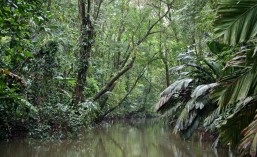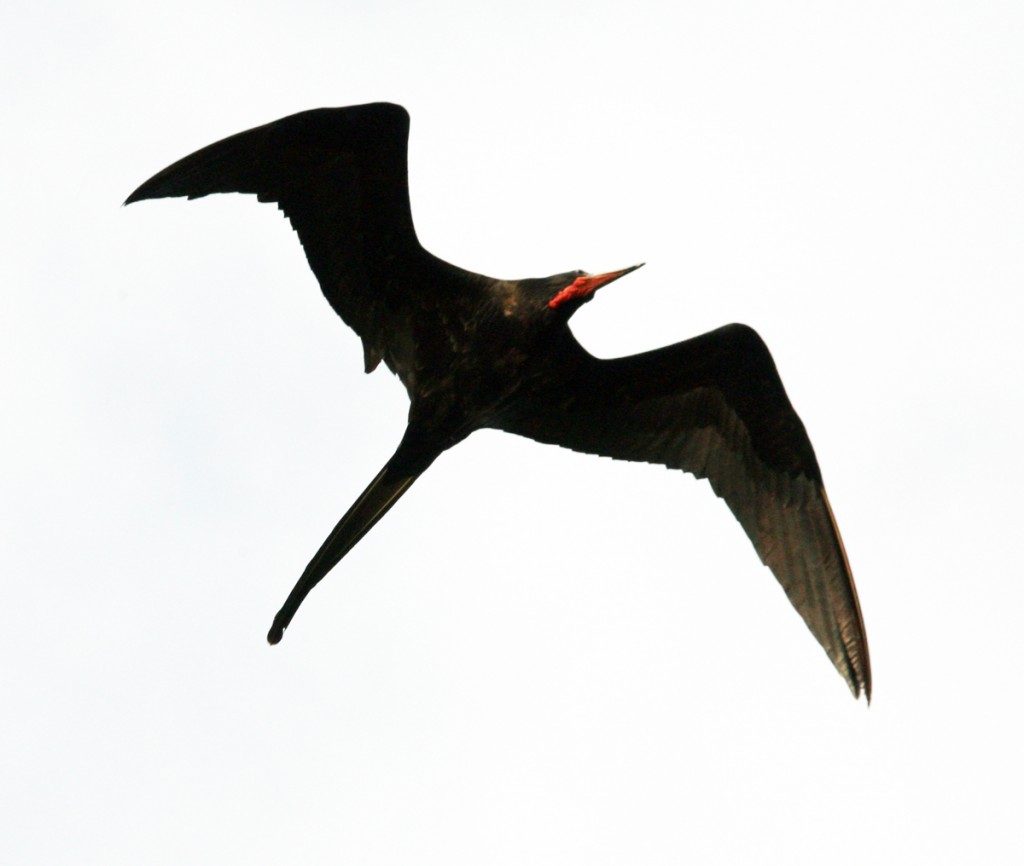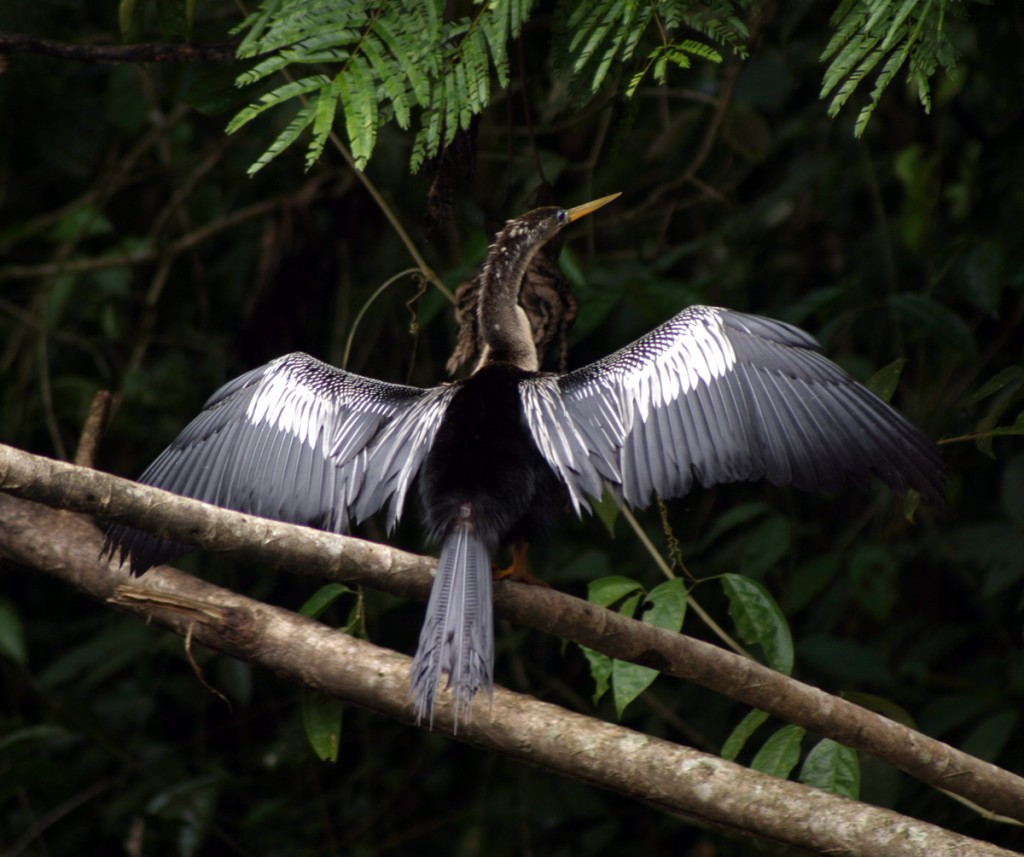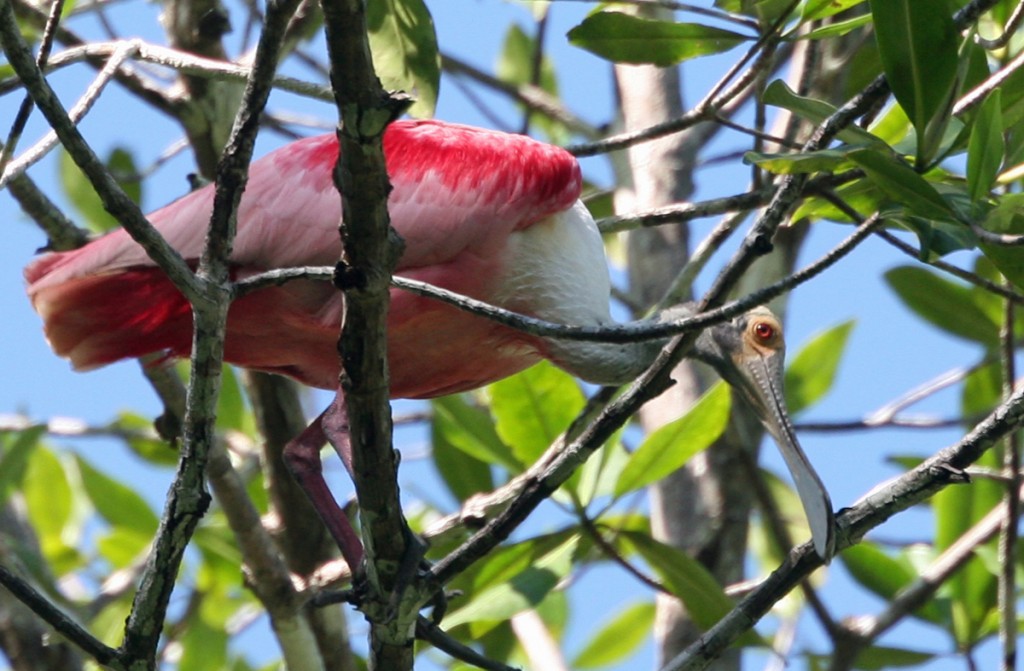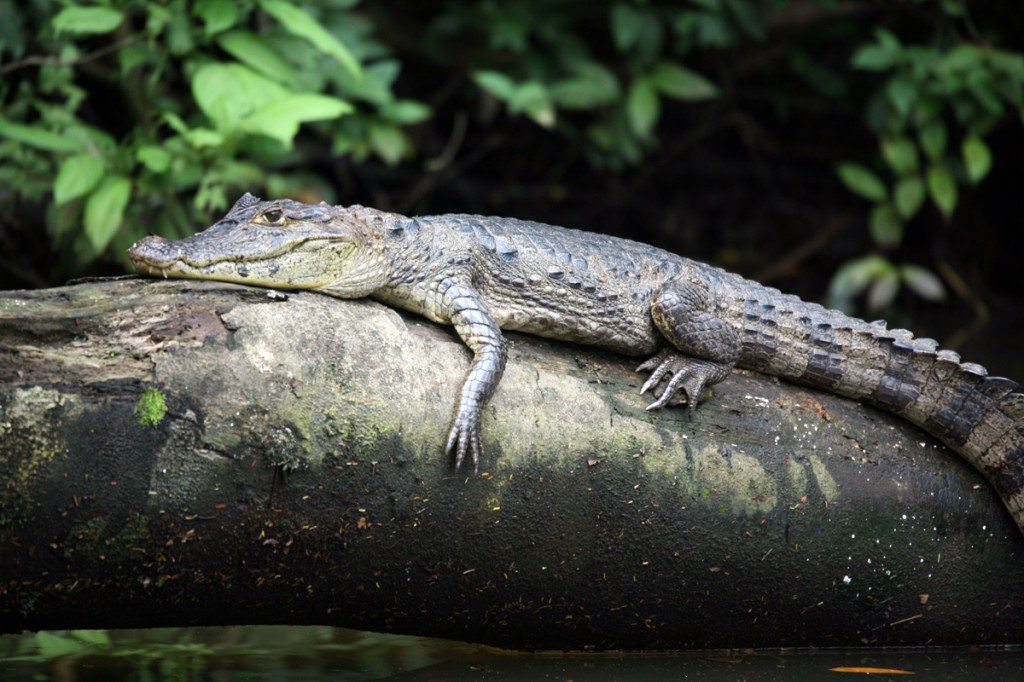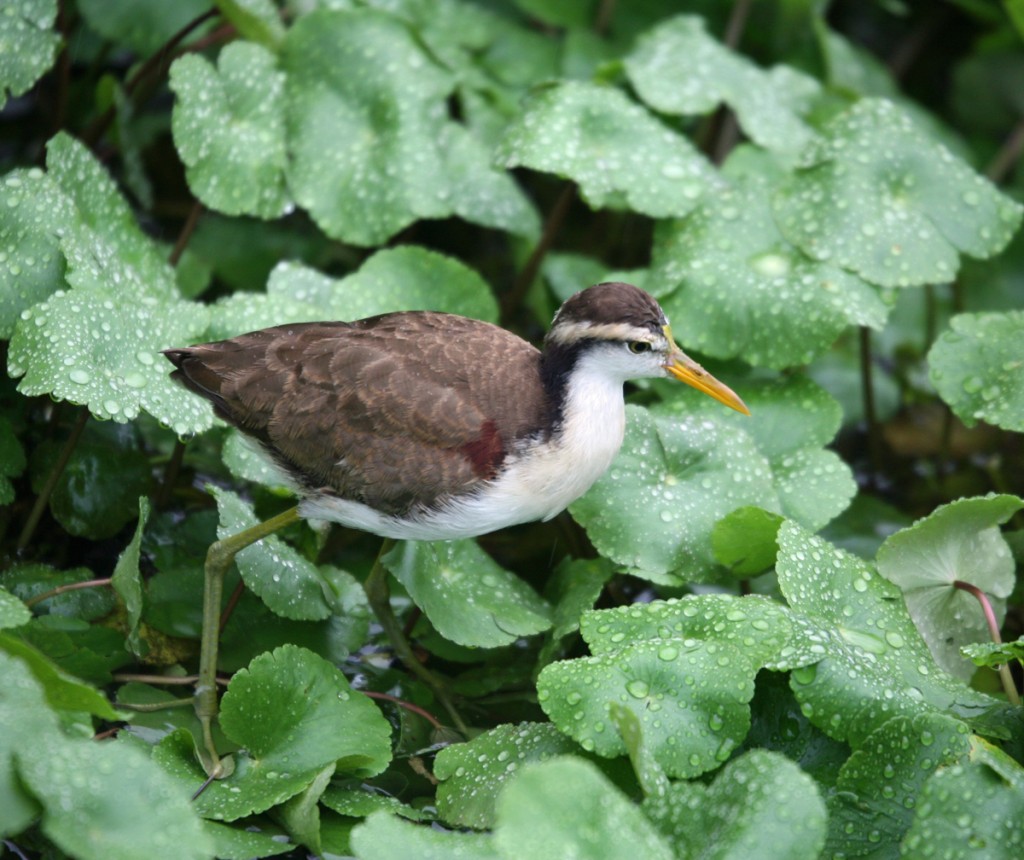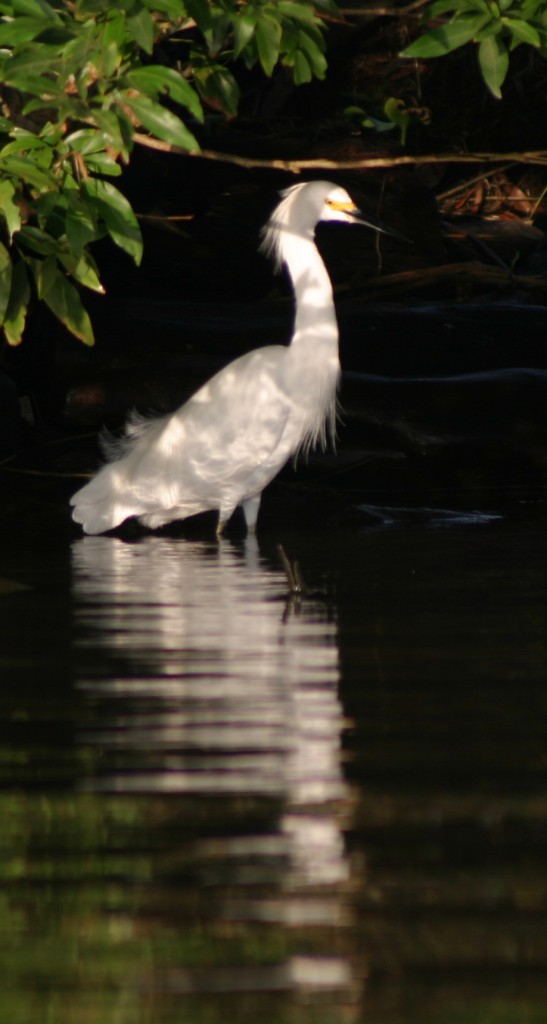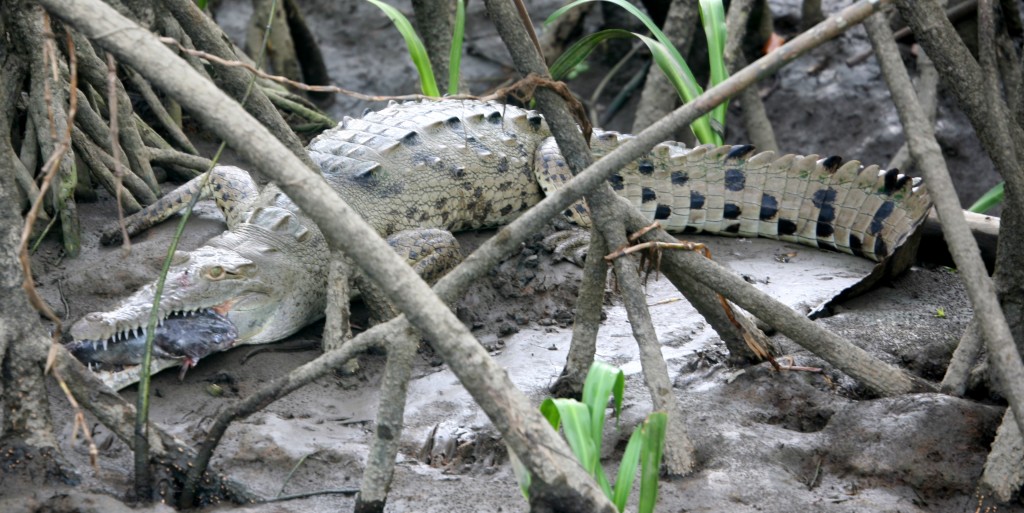This Neotropical River Otter (Lutra longicaudis) is eating an eel alive. The writhing creature didn’t stand a chance against the otter’s dexterous paws and sharp teeth, but it made a terrific holiday feast on a muddy bank of the Sarapiqui River. This photograph was taken on Christmas Day in 2010.
All media is copyright costaricawildlife.net, 2013.
